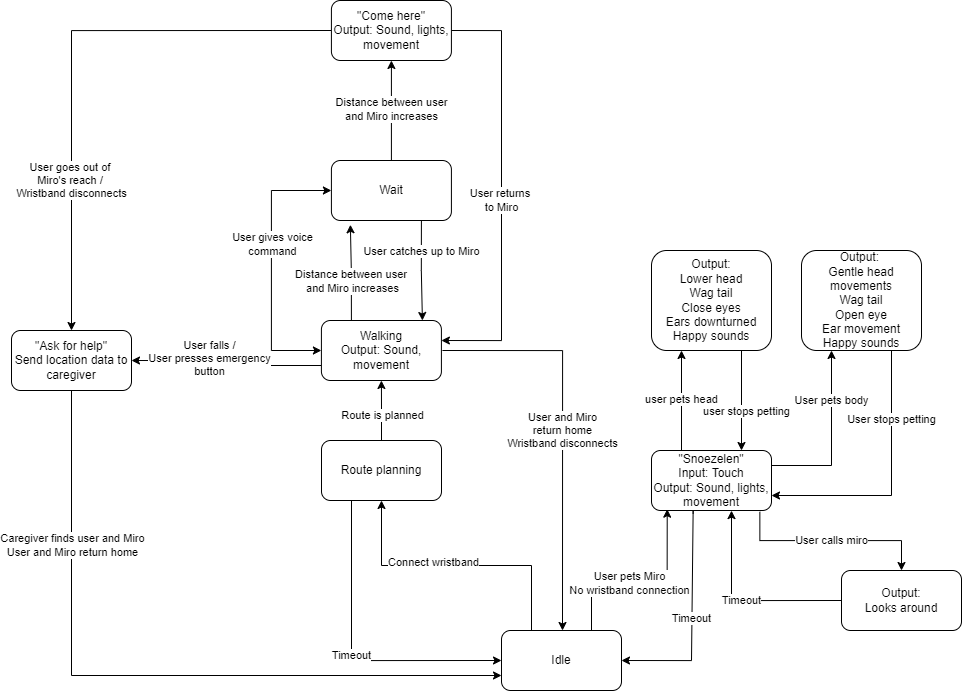Functions
For our project we wanted to make use of Miro. However, a companion robot like the Sony Aibo might be more suitable for our purpose, as it has legs instead of wheels.
There are two main functions of the Miro that we want to design for:
- Walking with Miro
- Engage in snoezelen with Miro
These functions are described and laid out in the sections, flowchart and storyboards below.
1. Walking with the MiRo
Walking with the MiRo is divided in two functional parts: Starting the walk and guiding the patient on the path.
1.1 Starting the walk
MiRo can be programmed with various walking routes. We assumed that, in general, the patients with dementia are not able to choose and/or set up a good/suitable walking routes by themselves, and therefore we think that placing this responsibility at the activity coordinator is the best option. The coordinators can set up new walking routes through an online portal in which they can draw a route on a floor plan of their building. The coordinators can then create profiles for each of their patients to specify a walking plan containing suitable routes.
The patient can start a walk by indicating to a caretaker that he/she wants to take a walk (for example in the form of a button). Once the patient presses the button, a caretaker will come to bring MiRo. The caretaker will also attach the proximity bracelet, see section ??? for its description. MiRo will then either automatically choose a suitable route or get instructed by the coordinator for a specific route.
1.2 Guiding the patient
1.2.1 Indicating route
Once the route is started, MiRo walks ahead to show the way. When approaching turns, MiRo indicates which way to go by slightly moving towards the desired direction and moving his head to indicate the turn. When the patient does well (e.g. follows MiRo consistently), MiRo gives positive reinforcement in the form of excited sounds and a wagging tail.
1.2.2 Guiding human back on route
Description
- Determine when the human going off the path
- Getting attention of the human
- Noises
- Tilting head
- Going towards human, gently blocking path
- Alerting caretakers when human does not return to path
2. Snoezelen
Proximity bracelet
Flowchart:
Storyboard compliant who likes dogs:
Storyboard reluctant elder who doesn't like dogs or doesn't want to be led by a dog (Constantijn)
Storyboard for a fallen PwD:
Storyboard for a PwD who is very social and talks in the hallway:
Storyboard for a petting session with the robot dog:
Storyboard for a petting session with the robot dog for Contantijn (person who doesn't like dogs):